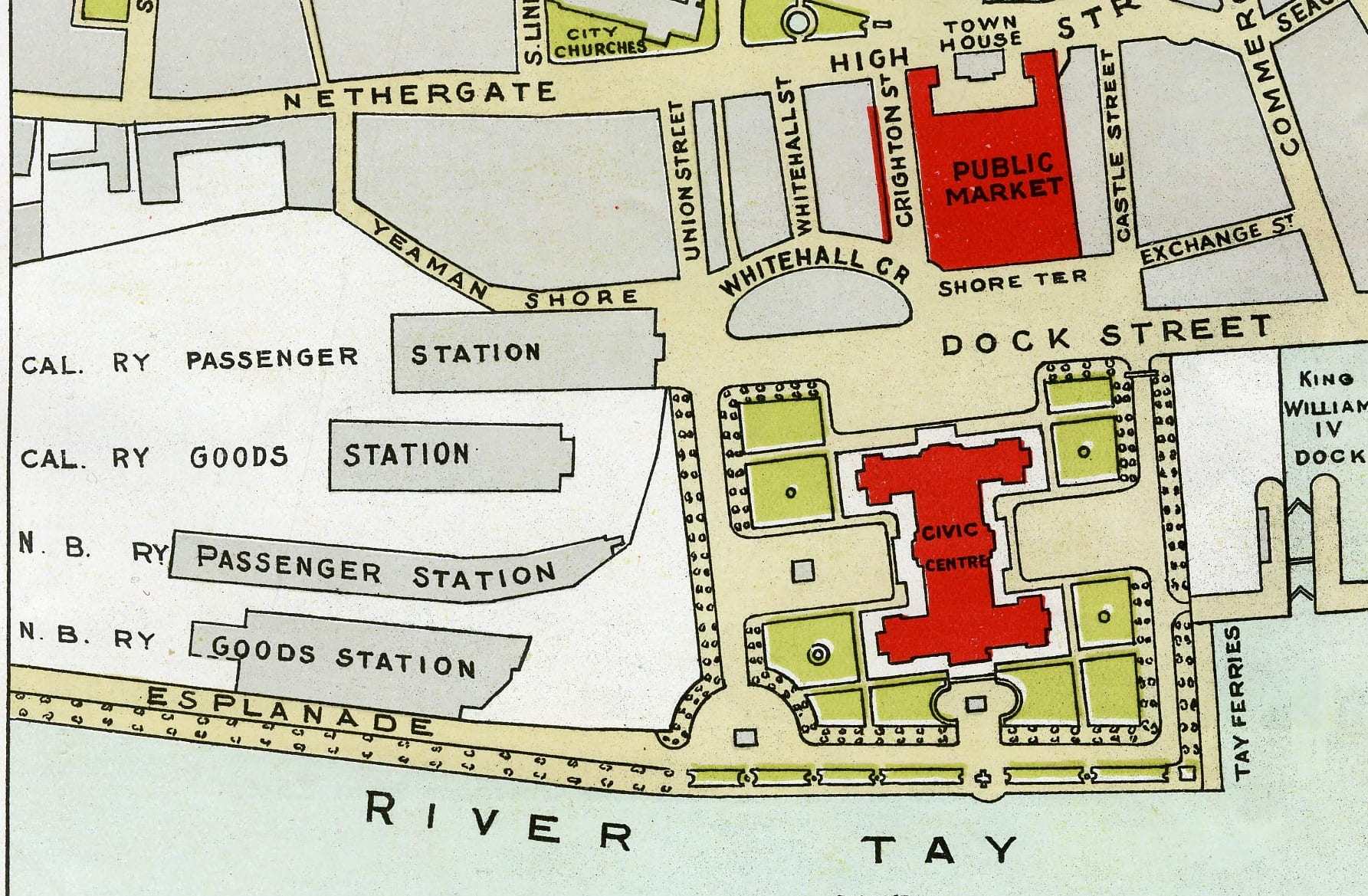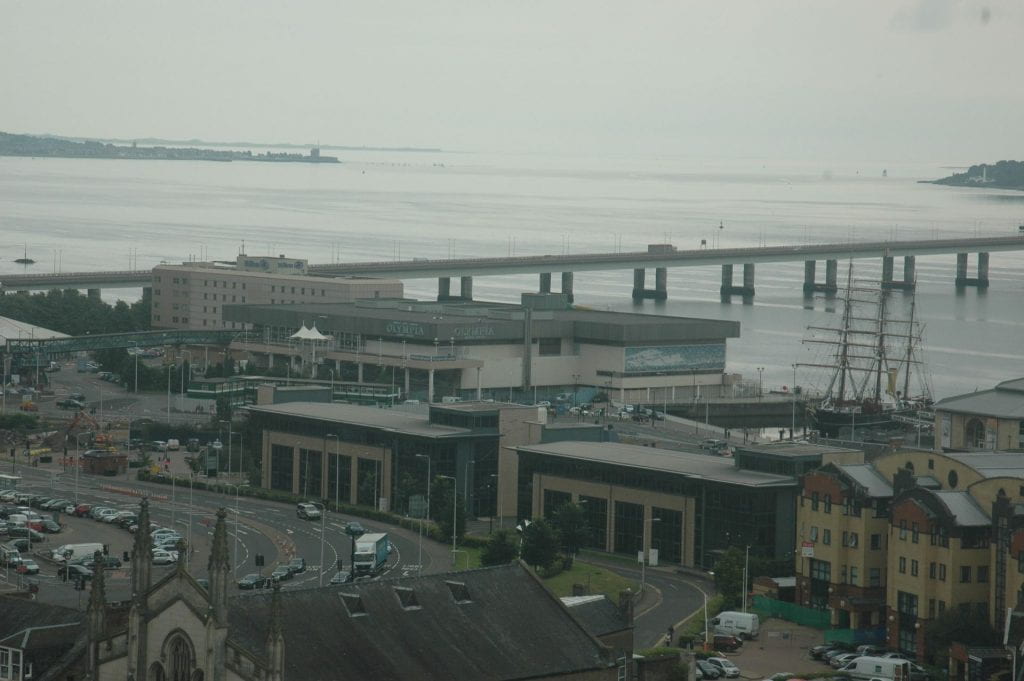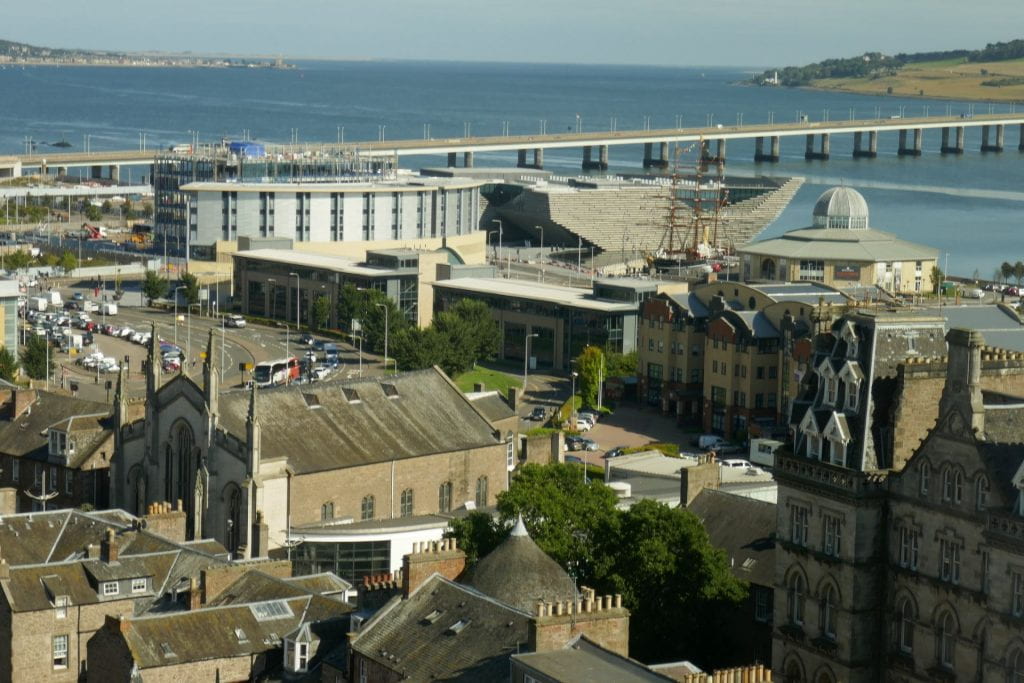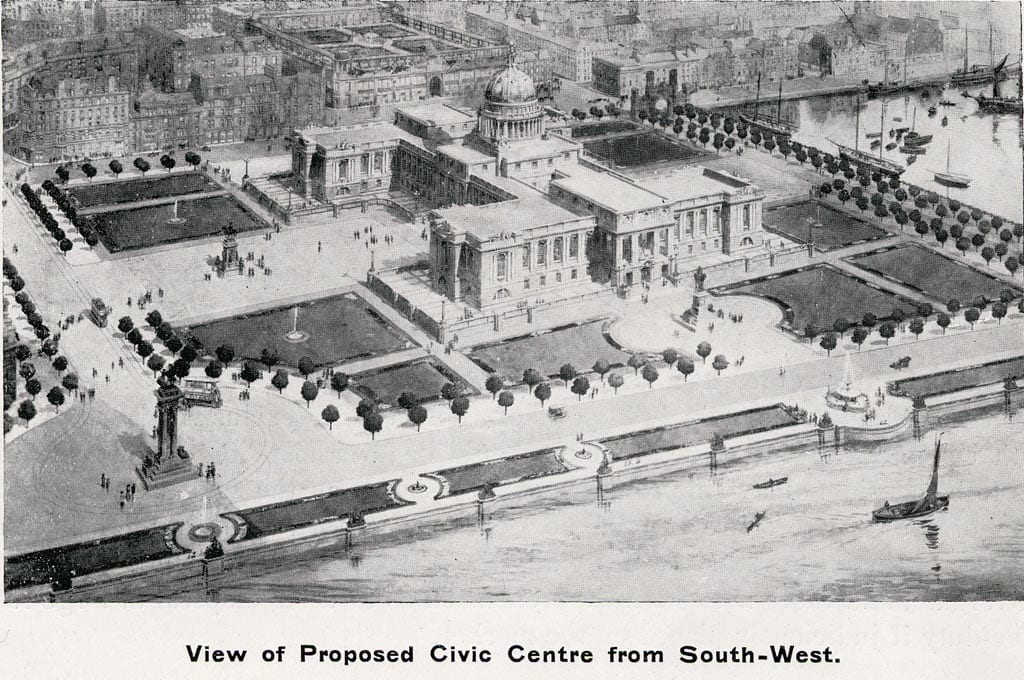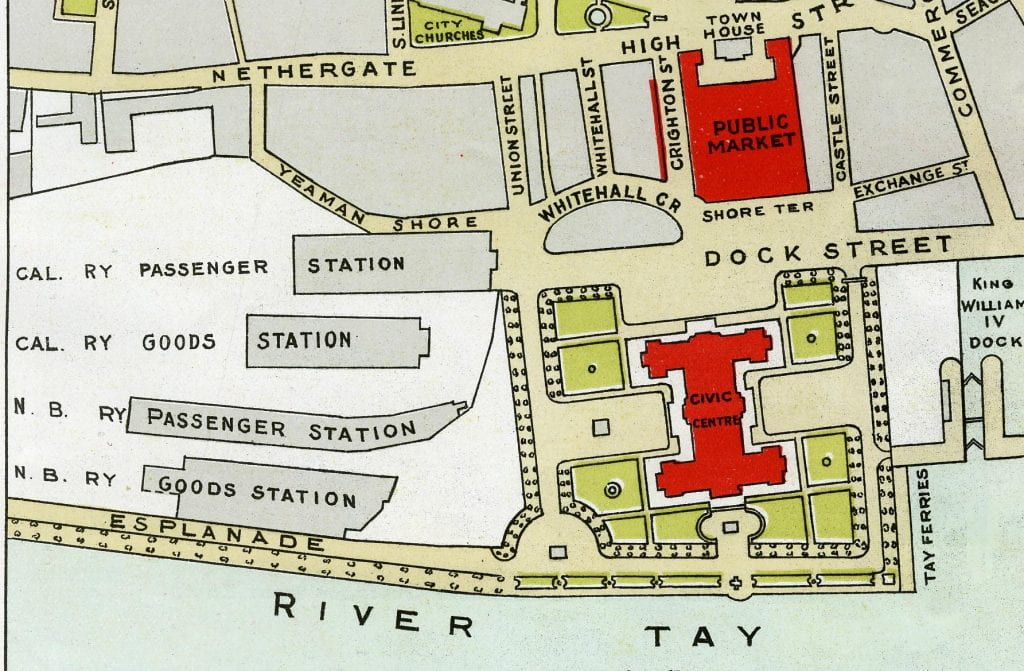For the third in our series looking at how the City has changed the University Archives focuses on the site of the V&A, an area which has been transformed over the last 250 years. Crawford’s 1776 plan of Dundee shows us that the area was the site of the harbour to the south of West Shore (now Dock Street).
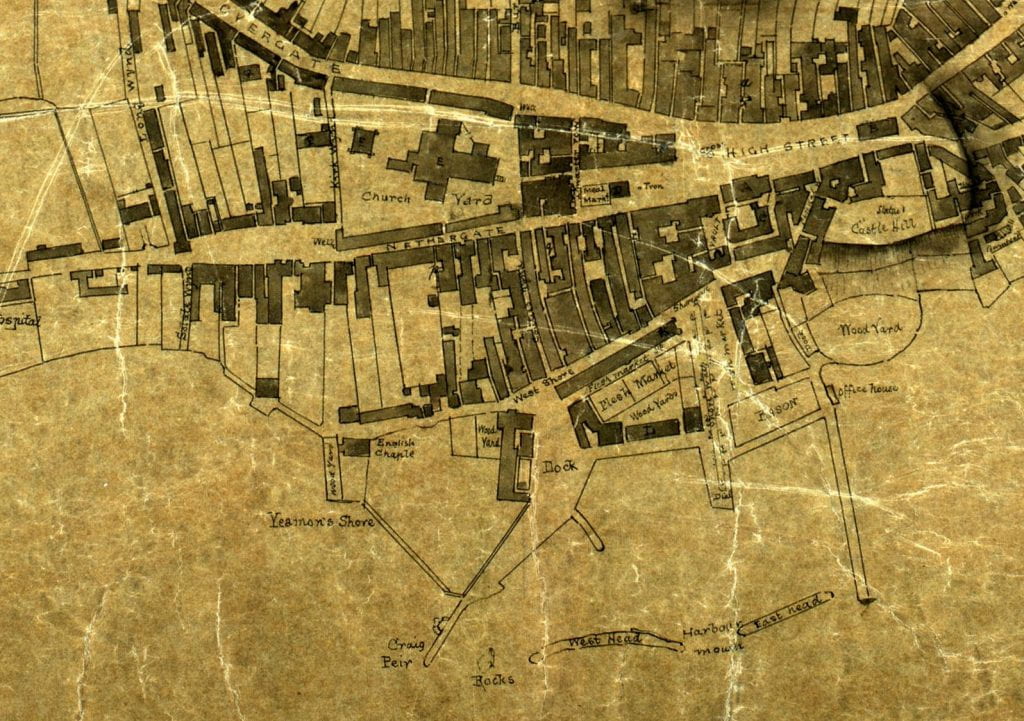
At this time, the harbour was a small and fairly primitive affair, but industrialisation and the textile and whaling boom of the nineteenth century would see it transformed. Charles Edward’s 1846 plan shows that the old harbour had been replaced by larger and more modern docks.

Where the V&A now stands was Earl Grey Dock, which was named after the Prime Minister who had passed the Reform Act of 1832, and which was completed in 1834. As Dundee continued to grow, and its industries continued to expand, further larger docks were added to the east. The entrance to the dock, and the harbour master’s observation tower can be seen in this 1922 photograph. You can see the Tower marked on the plan above. Behind the Tower in the photograph is the Caird Hall which was officially opened in the following year.
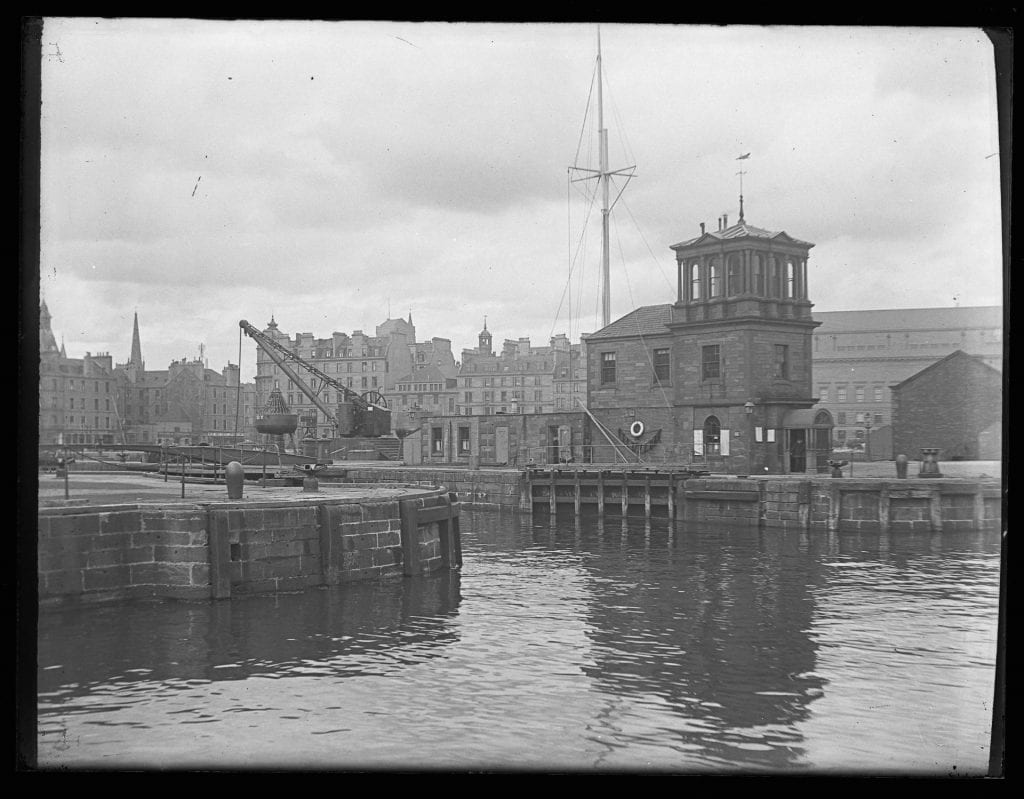
As this section from an 1889 map shows, south of the Earl Grey Dock was the location of the public baths. You can also see the two railway stations to the west, the North British Station was on the site of Dundee’s current station.
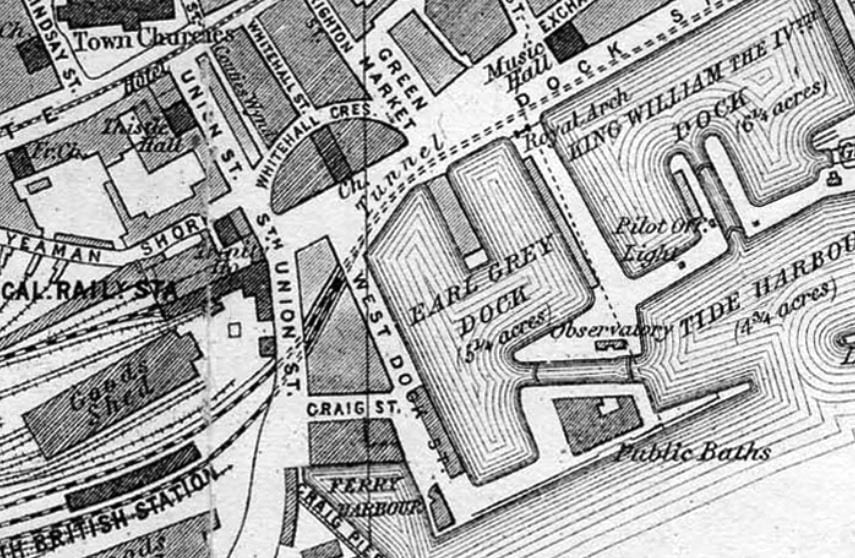
The baths had been located here since 1848, but had been greatly transformed in 1873 with the opening of the public swimming baths (pictured below in around 1880). These were rebuilt in 1909-1910 but were finally closed and demolished in the 1970s having become rather isolated from the rest of the City. As coastal shipping declined the docks saw much less traffic and their size meant they could not accommodate larger vessels. Thus, when work on the Tay Road Bridge began in the early 1960s, the docks were filled in to make way for its approaches.

Dundee Swimming and Leisure Centre was built on the site of the old Earl Grey Dock and opened to replace the old baths in 1975. It was later rebranded as the Olympia.
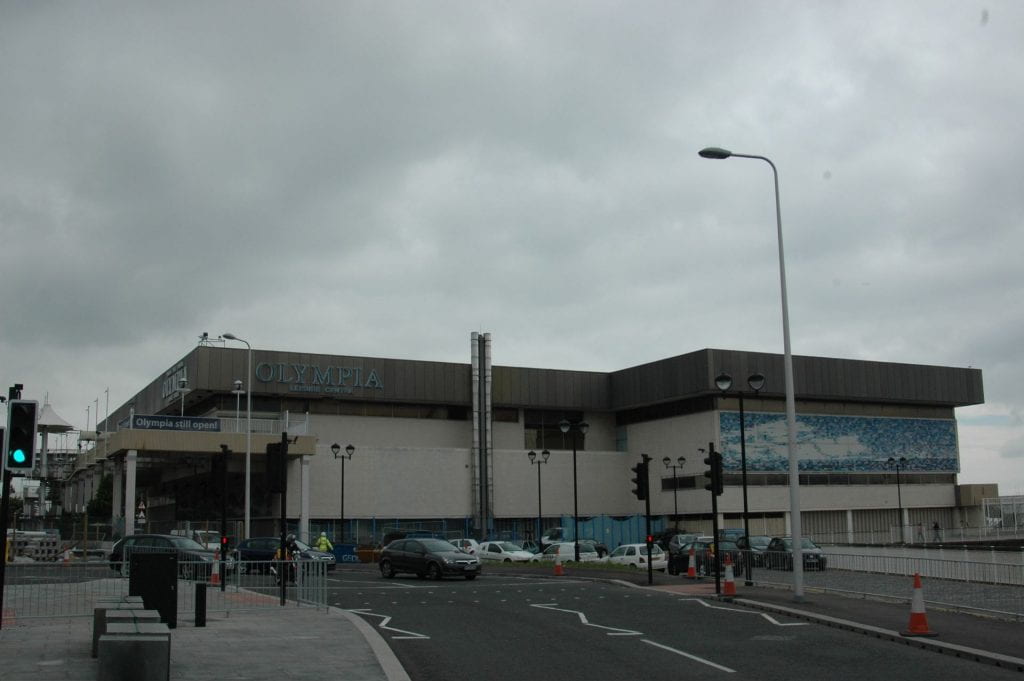 In the 1980s it was joined by the Earl Grey Stakis Hotel, which later became the Dundee Hilton. Neither of these buildings was particularly attractive and by the 2000s both were seen by many as eyesores.
In the 1980s it was joined by the Earl Grey Stakis Hotel, which later became the Dundee Hilton. Neither of these buildings was particularly attractive and by the 2000s both were seen by many as eyesores.
As the idea of Dundee reconnecting with its waterfront gained momentum, voices calling for their removal grew. A new Olympia was built at the East Port while the Hilton also moved out allowing demolition work to start on both buildings in 2013. Over the next few years the V&A would spring up in their place, opening in 2018.
However, this all might have been moot if City Architect and City Engineer James Thompson had had his way. His radical plan for transforming the centre of Dundee, first proposed in 1910 and periodically returned to over the next few years, was to have given Dundee a massive new civic building as the centre piece of its changes.
This was to have been the city’s architectural crown and Thompson planned to site it on the waterfront on land reclaimed by filling in some of the docks; the design above is situated on the Earl Grey Docks site. What is now the Malmaison is the building in the top left of the image. Thompson’s vision included widening streets and, in the case of Union Street, “the view of the river would be restored, and more than ample spaces for public purposes would be provided.’ Thompson concluded “while it might be suggested that the proposal looks far ahead of present day requirements … the possibilities of the future must be provided for.”
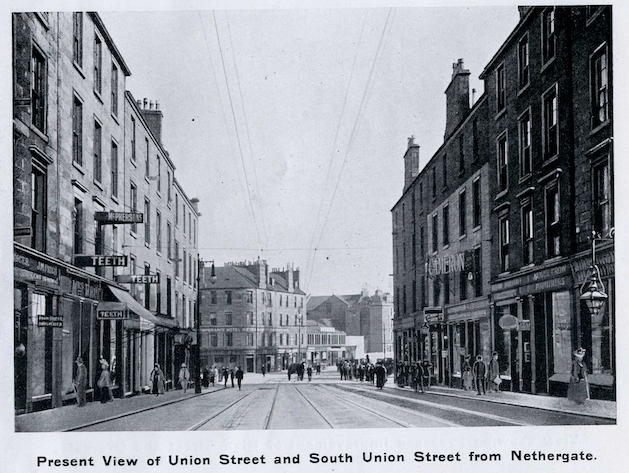
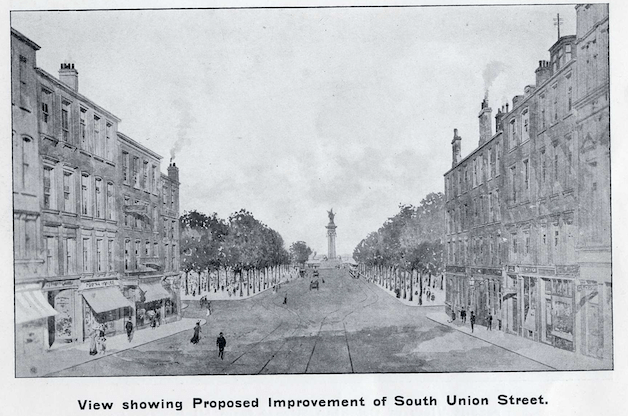
The proposed developments at the bottom of Union Street and the Civic Centre would have occupied the V&A’s site. Sadly the idea was well beyond what Dundee could afford and without private backing it never came to pass and the idea of a new architectural marvel on the banks of the Tay would have to wait 100 years to come to fruition.
